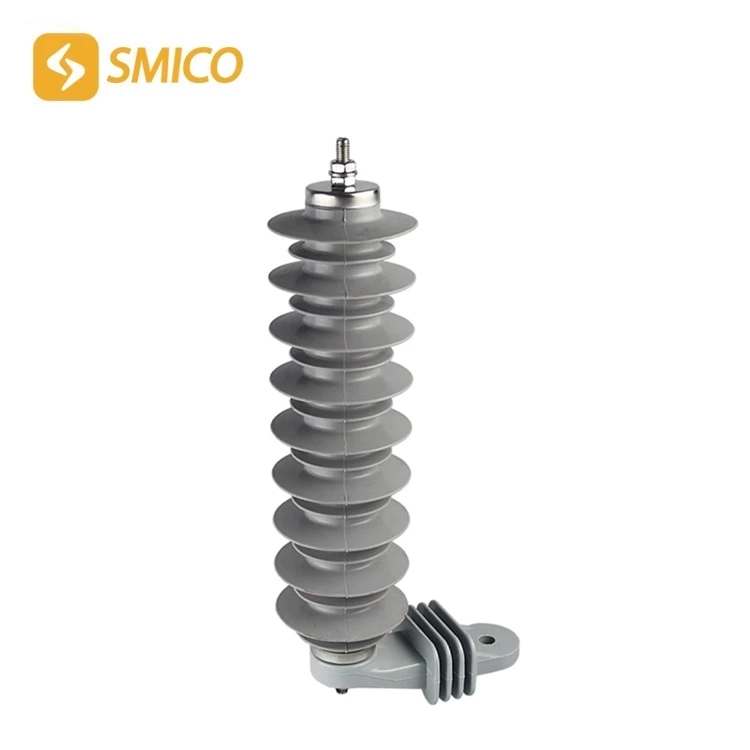Lightning Arrester: The Key Choice For Protecting Power Equipment!
In the power systems of industry, commerce and large buildings, 33kv surge arrester is a key device to resist lightning surges, grid overvoltage and operation overvoltage. Choosing the right 33kv surge arrester price can not only effectively protect power equipment, but also improve the reliability and safety of system operation. The following is a comprehensive guide to 400 kv lightning arrester selection, application and installation to help you make scientific decisions and build a reliable power protection system.
Why do you need 66 kv lightning arrester?
(1) Dealing with lightning strikes and inductive surges
Lightning strikes directly on power lines or transmitted to three-phase systems by induction will generate overvoltages of thousands to tens of thousands of volts, which may cause equipment to burn out and system interruptions.
(2) Protecting high-value equipment
Three-phase systems usually connect important equipment such as transformers, power distribution equipment, industrial machines, and data center servers, which are sensitive to voltage fluctuations.
(3) Improving system stability
Surges can cause abnormal system operation and equipment malfunctions. 66kv surge arrester can stabilize the grid voltage and reduce the occurrence of faults.
Core functions of 69 kv lightning arrester
(1) Shunting and absorbing surges
9kv 5ka lightning arrester absorbs surge energy through internal protection elements (such as varistors and gas discharge tubes) and quickly shunts it to the grounding system.
(2) Reducing residual voltage
Control the surge residual voltage within the tolerance range of the equipment (such as below 2.5kV) to ensure safe operation of the equipment.
(3) Continuous protection capability
With multiple lightning strike protection performance, it can work stably for a long time in areas prone to lightning.
Core parameters of 9kv lightning arrester
(1) Maximum discharge current (Imax)
Definition: The maximum surge current (8/20μs waveform) that a single surge protector can withstand.
Recommended values:
General area: Imax ≥ 40kA
High lightning risk area: Imax ≥ 100kA
(2) Nominal discharge current (In)
Definition: The current capacity that the SPD can stably withstand under multiple lightning surges.
Recommended value: In ≥ 20kA
(3) Voltage protection level (Up)
Definition: The maximum residual voltage generated by the SPD on the equipment after absorbing the surge.
Recommended value:
Precision equipment: Up ≤ 1.5kV
Industrial equipment: Up ≤ 2.5kV
(4) Continuous working voltage (Uc)
Definition: The maximum working voltage that the SPD can withstand for a long time.
Recommended value:
Three-phase system: Uc ≥ 440V
(5) Response time (tA)
Definition: The time from when the SPD detects a surge to when it triggers protection.
Recommended value: tA ≤ 100ns
(6) Multi-pole protection design
lighting arrester 11kv usually adopts a three-pole or four-pole design to ensure comprehensive protection of the L-L, L-N, and L-PE lines.
Selection recommendations for three-phase lightning arresters
(1) Selection based on application scenarios
1. Industrial plant
Requirements: Protection of industrial machines, PLC controllers, three-phase motors, etc.
Recommended parameters:
Imax ≥ 100kA
Up ≤ 2.5kV
Uc = 440V
2. Data center and communication base station
Requirement: Protect servers, switches and core equipment.
Recommended parameters:
Imax ≥ 60kA
Up ≤ 1.5kV
Uc = 440V
3. Photovoltaic and new energy systems
Requirement: Protect photovoltaic inverters, energy storage equipment and AC output parts.
Recommended parameters: Support DC and AC voltages, Imax ≥ 40kA, Up ≤ 1.5kV.
(2) Select according to lightning risk
Low lightning risk area: Select products with Imax ≥ 40kA.
Medium and high lightning risk areas: Select products with Imax ≥ 100kA to ensure safety under high-energy lightning strikes.
Installation and maintenance of three-phase lightning arresters
(1) Installation specifications
Installation location: Install at the main distribution cabinet or branch distribution cabinet, close to the power supply line terminal.
Grounding requirements: grounding resistance should be ≤10 ohms, and the grounding wire should be as short and straight as possible to reduce impedance.
(2) Multi-level protection
In high-risk areas, it is recommended to use it in combination with T1, T2, and T3 lightning arresters to build a hierarchical protection system.
(3) Regular inspection
Check the status indicator of the protector and replace it in time if it fails.
Perform performance tests after the thunderstorm season to ensure that the protection capability is effective.
Actual application cases of three-phase lightning arresters
(1) Industrial production lines
Requirement: Protect production equipment and control systems from surges and reduce downtime.
Solution: Install a three-phase lightning arrester with Imax ≥ 100kA and combine it with a secondary protector for hierarchical protection.
(2) Data center
Requirement: Ensure the stable operation of servers and storage devices and prevent data loss.
Solution: Install a three-phase power lightning arrester with Up ≤ 1.5kV and combine it with a T3 protector to finely protect the equipment terminal.
(3) Photovoltaic power station
Requirement: Protect the inverter and AC distribution part to improve system operation efficiency.
Solution: Use a three-phase lightning arrester that supports AC/DC dual mode to ensure safety in areas prone to lightning strikes.

